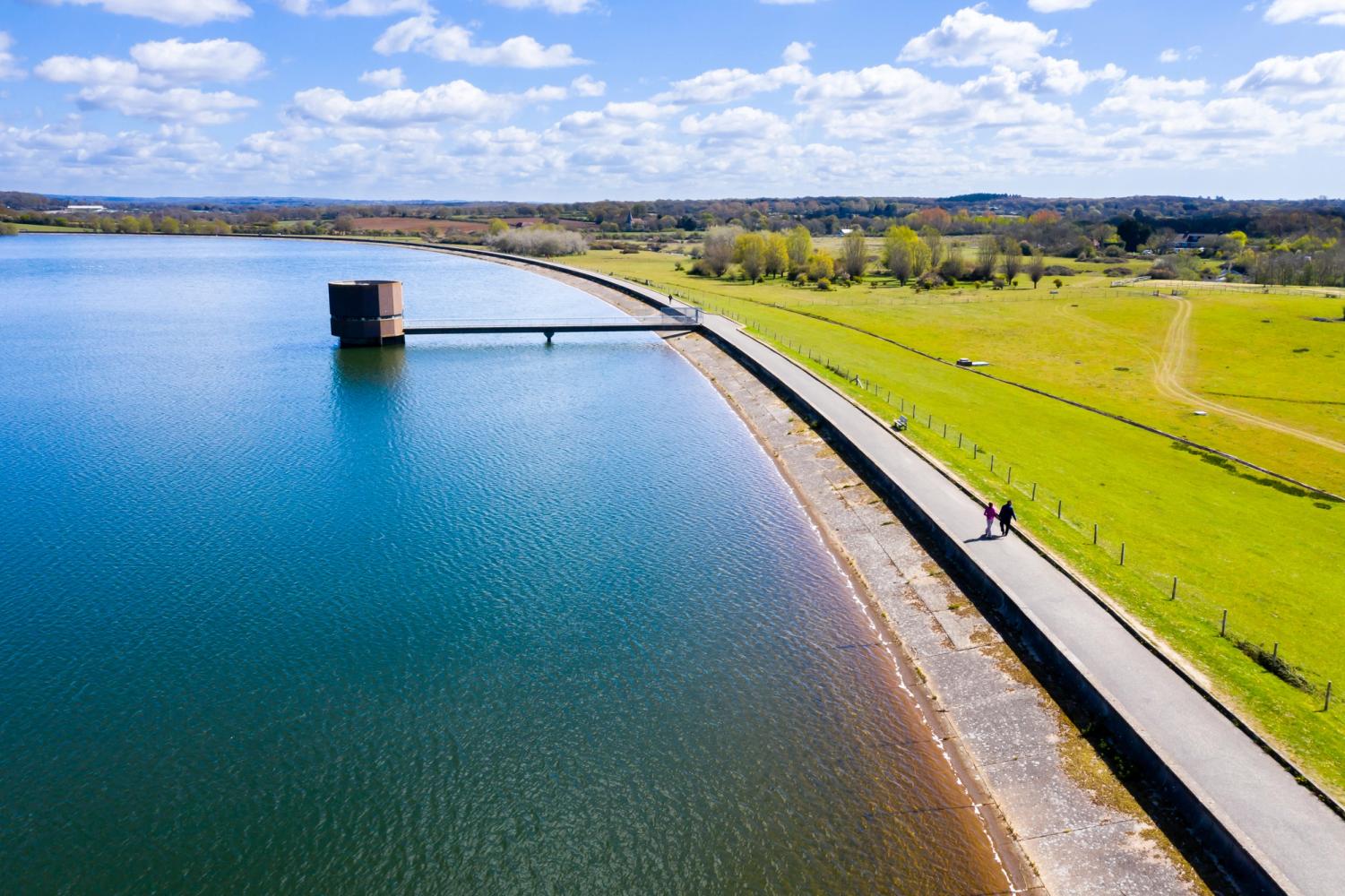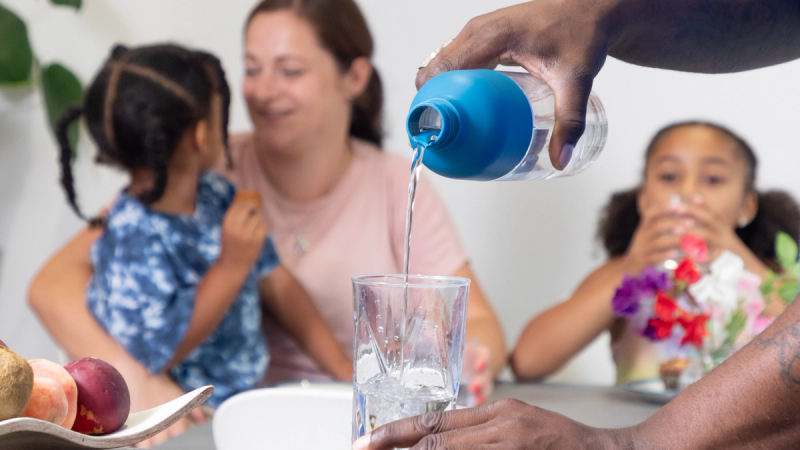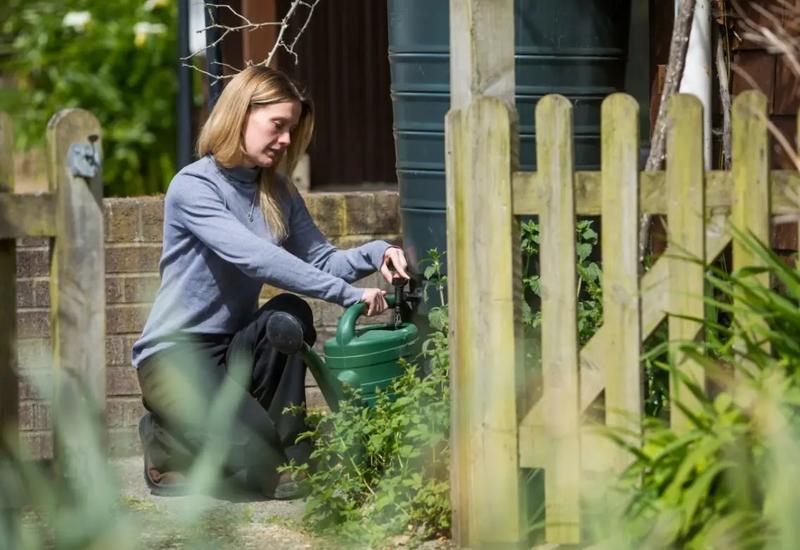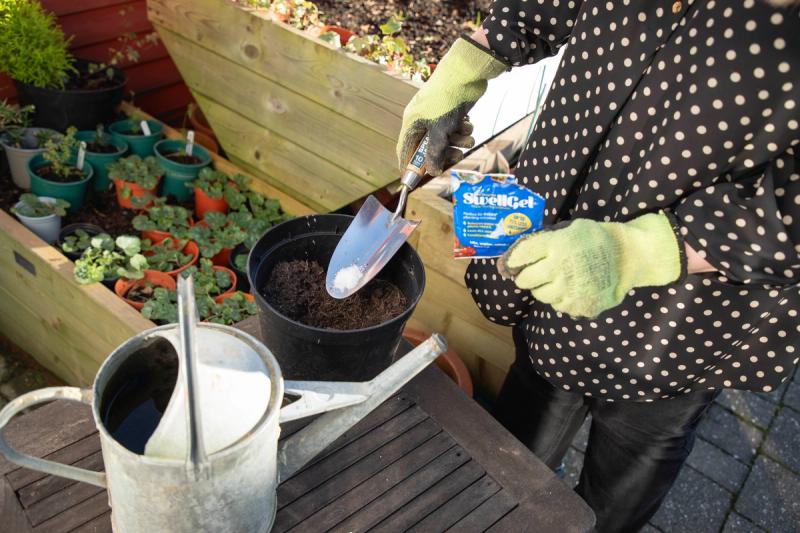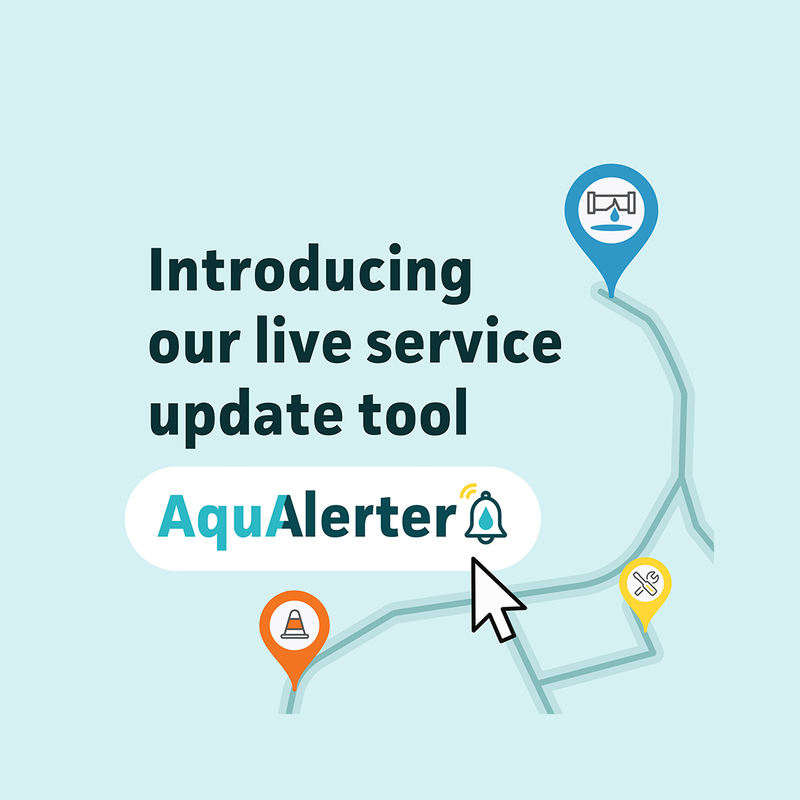Drinking water is used for almost everything at home, which means in summer we all tend to use more.
Once the hotter months arrive, if everyone turns on their taps to wash down their patios, clean their cars and water their flowers all at once, it can put a strain on the water supply network.
That’s why we’re asking everyone to make simple changes now, that will save water and let you enjoy more of summer later.
Simple changes outdoors:
- Watering the garden by the butt full to save water later -
Installing a water butt to collect rainwater might not sound like a big deal, but it could make all the difference in hotter months.
We subsidise the cost of water butts, so you get a discount, order here(opens in a new tab).
- Jet washing now to save water later -
Right now, whilst water levels are high it’s the ideal time to jet wash the patio and driveway ready for summer.
- Refilling the hot tub now to save water later -
Again, get summer-ready while our water levels are high and fill up the hot tub now.
- Planting drought-tolerant plants to save water later -
As climate change presents us with the challenge of gardening with less water, choosing plants to suit our growing conditions becomes important.
- Covering pots and borders with mulch to save water later -
Protecting the ground from the heat with mulch, like bark chippings, will lock in moisture and reduce the amount of watering you’ll need to do.
- Weeding now to save water later -
Weeds grow quickly and compete with your plants for valuable moisture, so regular weeding ensures that water is not wasted on weeds.
Simple changes indoors:
- Dipping in and out of the shower to save water later -
Taking a shorter shower in the summer months can really help keep the taps flowing for everyone and save a few quid on your energy bills.
We can help you keep to time, with a free shower timer, order here(opens in a new tab).
- Using the small switch to save water later -
Got a dual flush toilet? The small button releases about a third less water for a shorter flush. So why not switch to the small switch?
- Turning it off while brushing to save water later -
It’s so easy to just have the taps on whilst brushing your teeth, but you could save about a bucket of water but simply turning it off.
- Looking after leaks to save water later -
You might not notice it, but a leaky loo can be costing you as much as 4 baths of water a day. Save precious water by getting your leaky loo fixed.
We can help you find an approved plumber.
Order free leaky loo strips, so you know when you have a leak, here.(opens in a new tab)
Let us know if you find a leak in your loo.
- Cold collecting to save water later -
Collecting cold water in the shower or sink whilst waiting for the hot water so you can use it around the house or garden to water your plants.
- Scraping this summer to save water later -
Running the tap to rinse dishes can use loads of water. Simply scrape away any leftover food straight into your food waste bin and soak pots, pans and plates in a washing-up bowl if needed.
- Chilling now to save water later -
No need to run the tap until it's cold, just keep a reusable bottle topped up in the fridge. So, you will always have refreshing chilled water available.
- Saving up dirty clothes to save water later -
Washing a full machine load of clothes uses less water and energy than 2 half-loads. This means lower bills as well as saving water.
Find out more about saving money and water through your appliances(opens in a new tab).
Supply updates
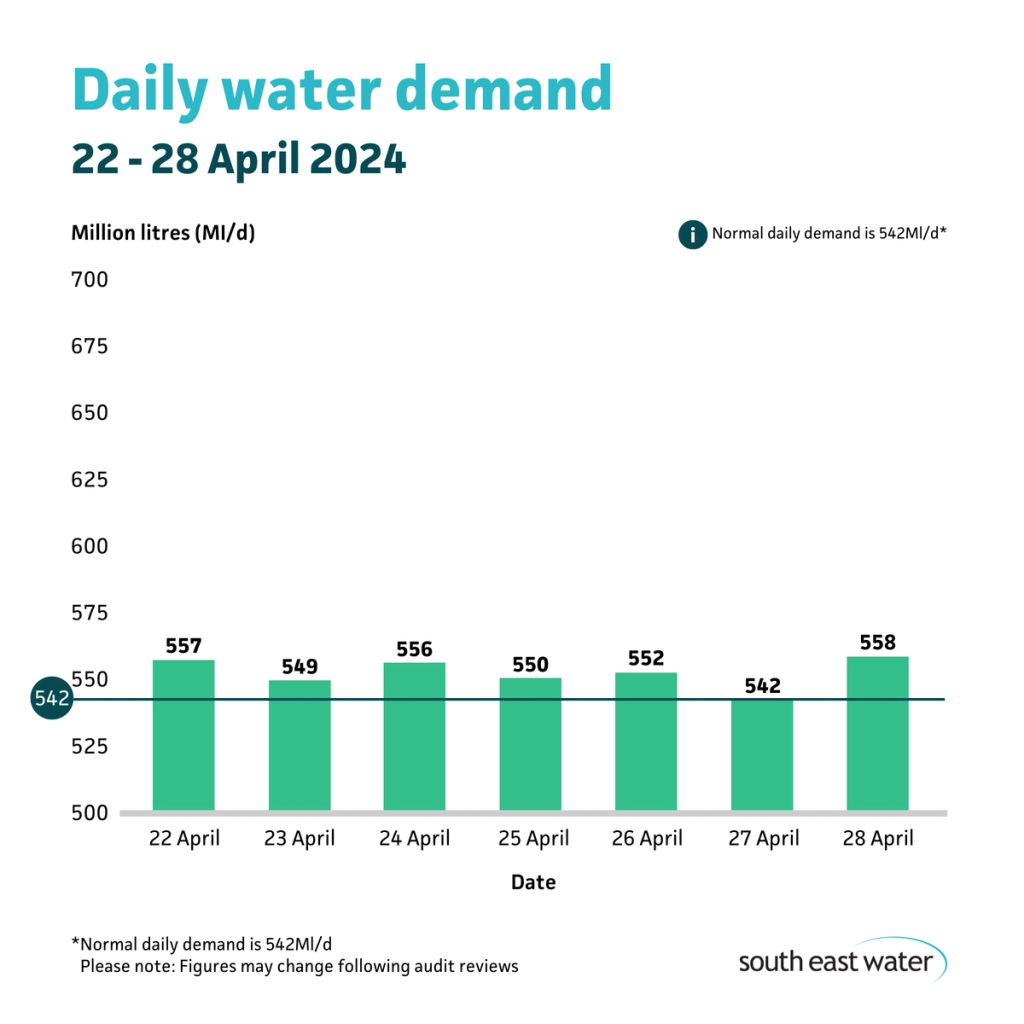
What are we doing to prepare?
We're constantly making improvements to our network to help us ensure a resilient supply by:
Increasing
- the number of tanks that store our clean water
- the amount of water we have available
Replacing and repairing
- pipes - between 2021 and 2023 we completed 4,482 repairs where we replaced small sections of pipe equivalent to 21.30 kilometres
- we have also replaced larger sections of pipe, 115 kilometres to be exact, which is equivalent to more than 1,000 football pitches
Installing
- new meters so we can more accurately see how the water is flowing around the network
Forecasting
- analysing data to forecast how much water we need to abstract, treat and pump
- looking at the weather and when we think we may have extreme weather or fluctuations that could cause burst pipes
If you want to understand more about what goes into supplying water, then check out our blog - Water water everywhere. How do we get it from here to there?
We also want to continue investing and improving your water supply, and our most ambitious business plan has now been submitted to our regulator, Ofwat. Read our business plan for 2025 to 2030.
We are also preparing for the future; by 2033, we plan to build a new reservoir in east Kent, that will help meet demand as well as create new habitats, increase biodiversity, and provide countless social benefits for the local community. Keep up to date with the Broad Oak Reservoir project.
In your area
With all the rain we have had, our reservoirs have bounced back. Our water resources across the region are all still at good levels.
However, it's always best to be mindful of your water use all year round.
During spring, we suggest preparing your garden for summer and have plenty of tips and ways we can support you with this. Find out more by clicking the button below.
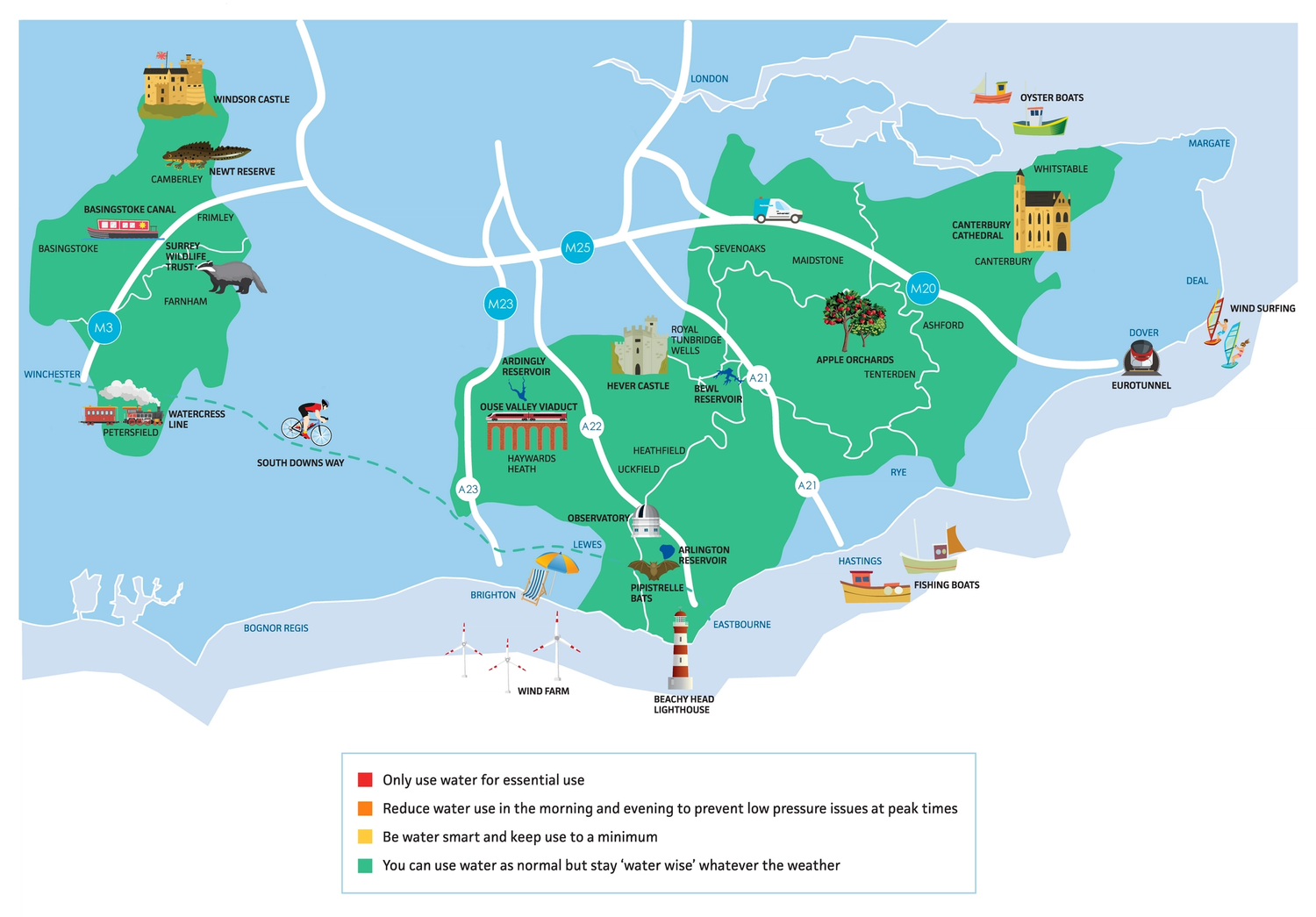
How we supply your water
Reservoirs
Throughout the summer months, we rely on our reservoir water reserves as the source for the millions of additional litres of water we supply through our network of pipes daily.
Our biggest reservoirs in Sussex, Ardingly and Arlington, store up to 8,300 million litres of water and together provide 8% of all the water we supply.
This is in addition to the millions of litres we sustainably abstract from, boreholes and chalk aquifers too.
Our reservoirs are replenished between October and April when rainfall and river flows are higher.
Treatment and beyond
Once we abstract water from the source, the process begins to treat the water, to bring it up to a safe standard for you to drink.
We take lots of care over the quality of our water and have lots of measures in place to monitor our treatment process.
Once treated we push water to drinking water storage tanks that are placed all around our region, which connect directly to the network of pipes that deliver water to taps.
This process can take a number of hours, and high water usage reduces our ability to supply water to the whole network.
